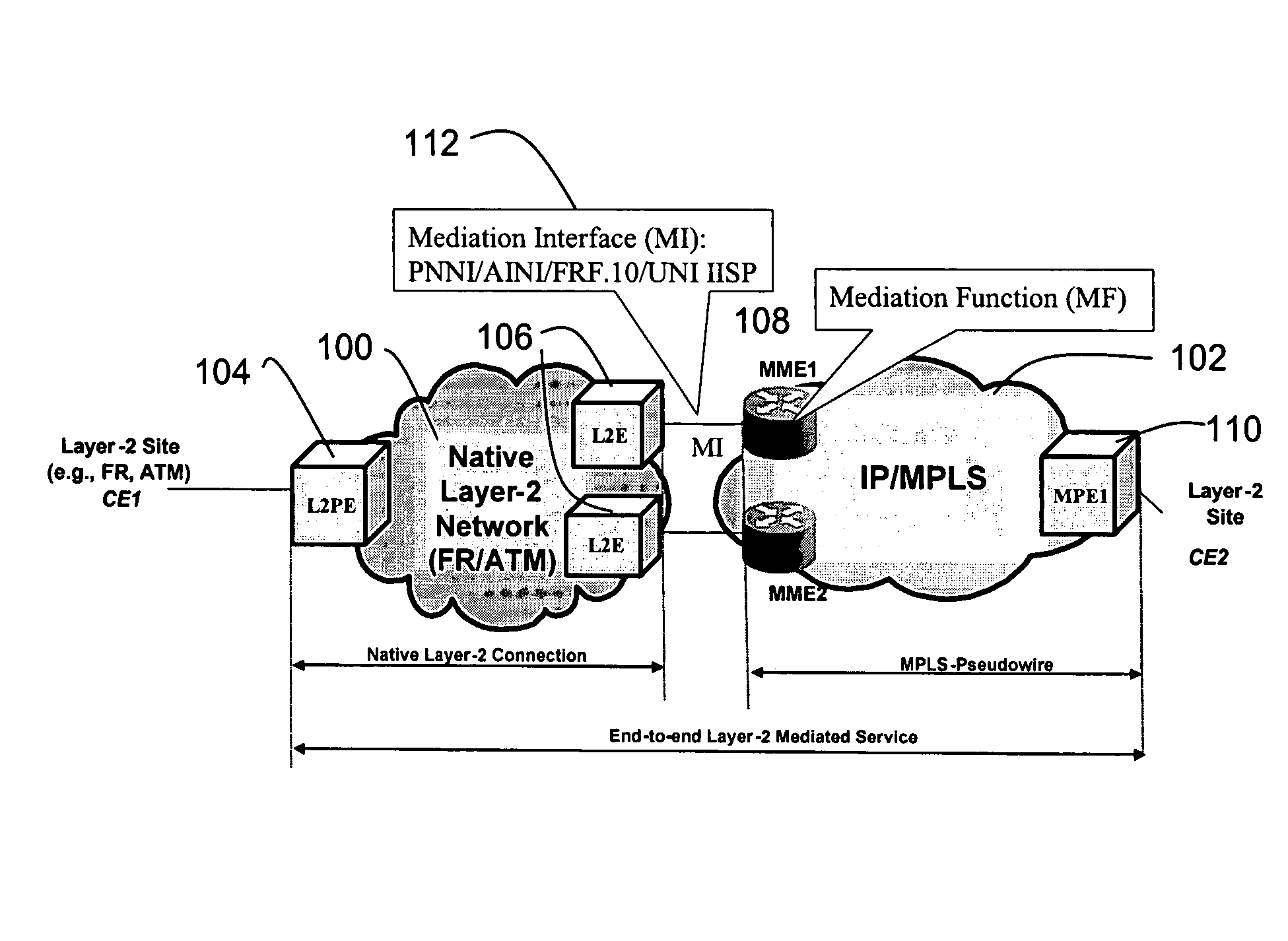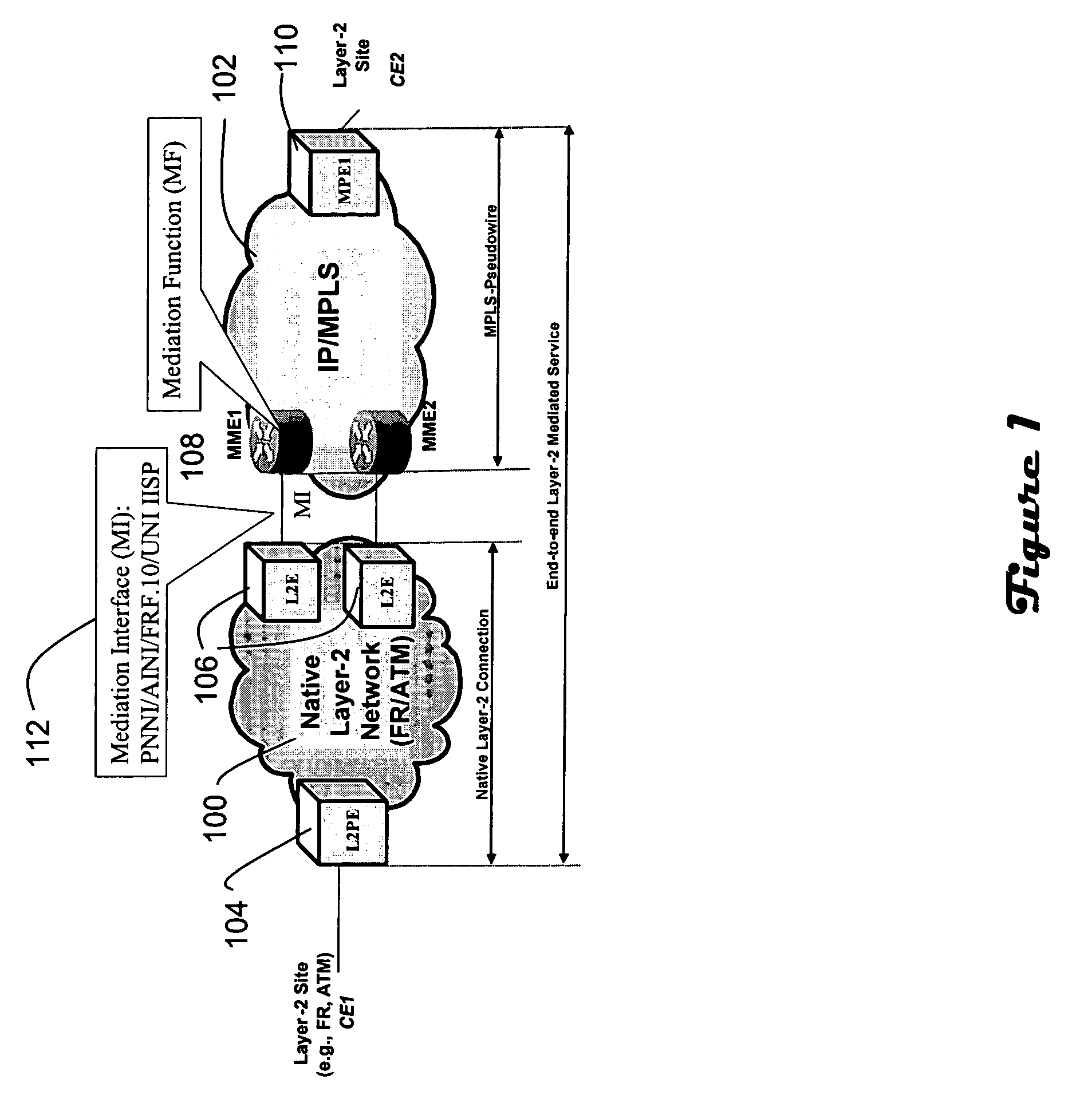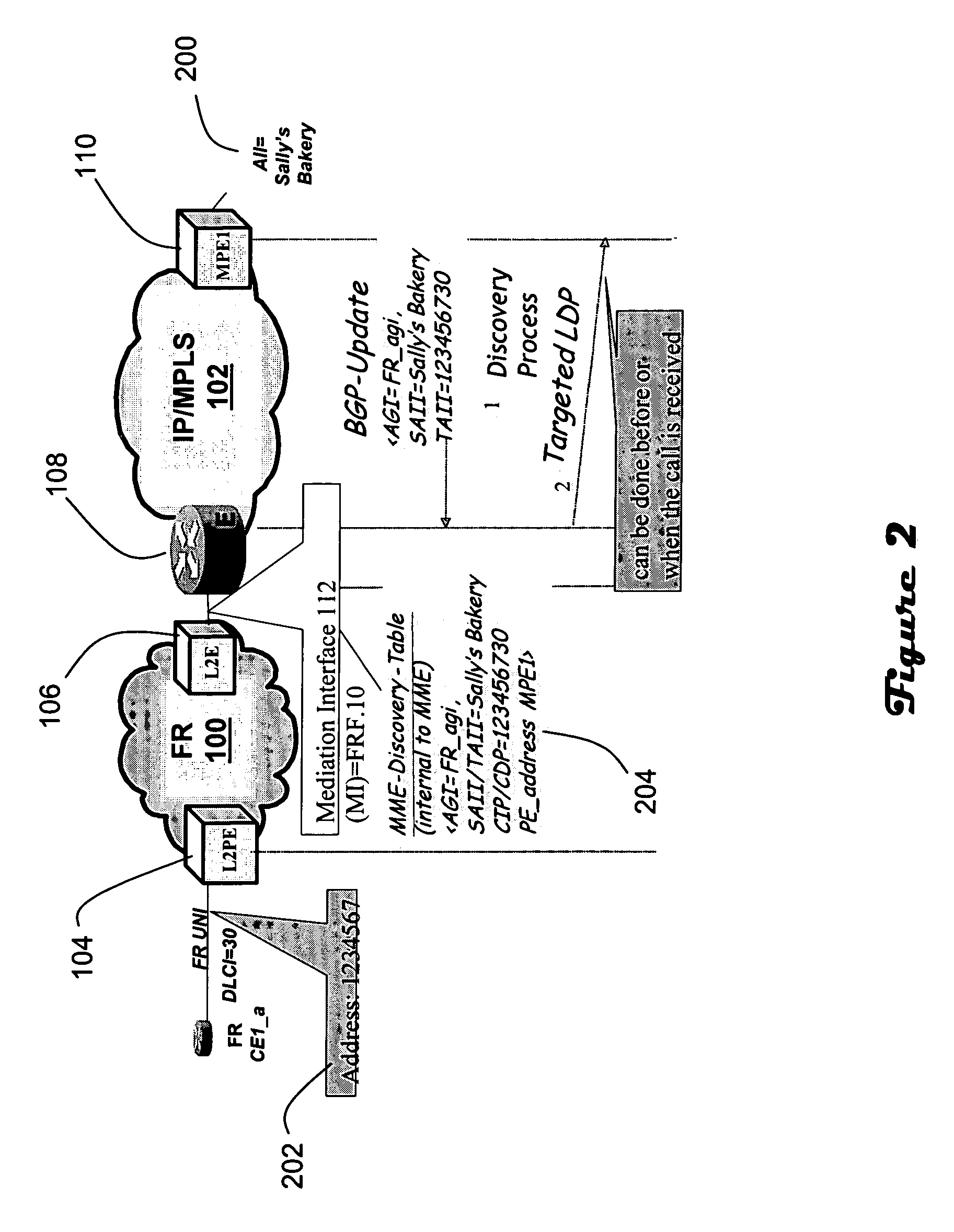Layer-2 to MPLS service mediation architecture
a service mediation and layer-2 technology, applied in the field of network communication, can solve the problems of unmapped mode, cost-effective deployment of parallel networks, restricting the set of forwarders on the mpe device, etc., and achieve the effect of facilitating mapped mod
- Summary
- Abstract
- Description
- Claims
- Application Information
AI Technical Summary
Benefits of technology
Problems solved by technology
Method used
Image
Examples
Embodiment Construction
[0023]FIG. 1 illustrates a network reference diagram for Layer-2 to MPLS Service Mediation. The network includes at least one native Layer-2 domain (100) which is in communication with an MPLS domain (102). The native Layer-2 domain employs Frame Relay or ATM, and includes a Layer-2 Provider Edge (“L2PE”) device (104) and Layer-2 Edge (“L2E”) devices (106). The MPLS domain includes MPLS Mediation Edge (“MME”) devices (108) and an MPLS Provider Edge (“MPE”) device (110). The MPE (110) interconnects customer sites that are attached to the MPLS domain (102). The L2Es (106) and MMEs (108) interconnect the Layer-2 domain with the MPLS domain. The MPE and MMEs may, in practice, be the same type of device. The L2PE (104) is a Layer-2 switch which interconnects customer sites that are attached to the Layer-2 domain. The L2Es (106) are Layer-2 devices that interconnect to the MMEs (108) via a Mediation Interface (“MI”) (112). The MI could be based on, for example, FRF.10 / X.76, PNNI, and AINI...
PUM
 Login to View More
Login to View More Abstract
Description
Claims
Application Information
 Login to View More
Login to View More - R&D
- Intellectual Property
- Life Sciences
- Materials
- Tech Scout
- Unparalleled Data Quality
- Higher Quality Content
- 60% Fewer Hallucinations
Browse by: Latest US Patents, China's latest patents, Technical Efficacy Thesaurus, Application Domain, Technology Topic, Popular Technical Reports.
© 2025 PatSnap. All rights reserved.Legal|Privacy policy|Modern Slavery Act Transparency Statement|Sitemap|About US| Contact US: help@patsnap.com



